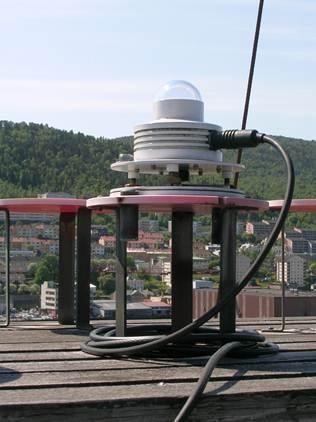UV radiation
While small amounts of UV radiation are essential for the production of vitamin D in people, overexposure may result in acute and chronic health effects on the skin, eye and immune system. Therefore, monitoring and forecast of UV radiation is an essential task. I addition to the effects on living organisms, UV radiation is also an important factor for degradation of different materials.

Main content
Ultraviolet (UV) radiation can be divided into three spectral regions:
- UVC (100-280 nm) is totally absorbed by the atmosphere (ozone etc)
- UVB (280-315 nm)
- UVA (315-400 nm)
Both UVA and UVB are of major importance to human health.
For monitoring UV radiation in Norway, Norwegian Radiation Protection Authorities (NRPA) and Norwegian Institute for Air Research (NILU) run a network of 8 stations. One of the stations is situated at our Radiation Observatory, as a joint project between NRPA and GFI. The UV-index in Bergen today, is found here.
In lack of measured data, UV radiation can also be modelled with radiative transfer models, like libRadtran and STAR. For UVB, both the amounts of ozone and clouds will affect the radiation reaching ground, while for UVA the effect of ozone is only minor.
For most stations measuring UV, only limited time series of UV data exist (data from at most 1995 on for the Norwegian network). To extend the time series, the European Cost-project COST 726 on UV-climatology and changes of UV radiation in Europe, was established. As part of this project, two Master-students at GFI derived long-term series of UV radiation (from 1957 on) for several locations in Norway. and used these data to study:
During the project, a new method for reconstruction of past UV data using a radiative transfer model was also developed (paper). For more information about the project, see here.
Contact at GFI: Jan Asle Olseth
